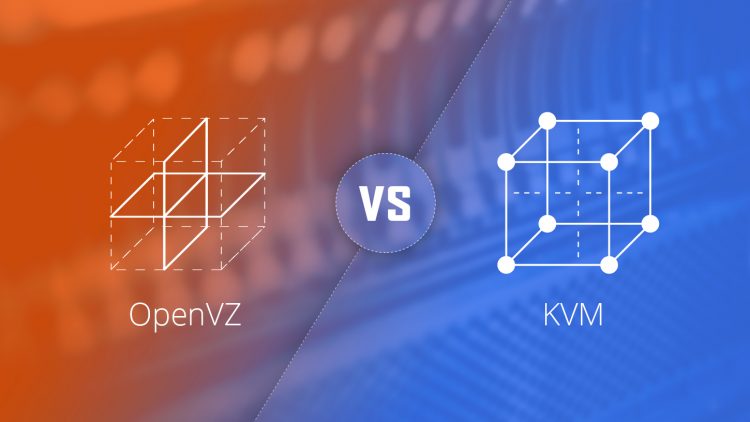OpenVZ vs KVM – What is the best virtualization technology to use?

Virtualization Overview
Virtualization has become the way to go when it comes to hosting having gained popularity over the last decade. The technological advancements have seen the barrier between operating systems and increased use of powerful physical servers almost removed. This has largely benefited businesses at all levels and many have made the switch to virtualization. This has largely been helped by the cost of using this technology becoming cheaper while the ease has also increased greatly.
In a nutshell, virtualization in this context involves breaking down one physical server into smaller Virtual Private servers. In each of the VPS provided there is a possibility to host multiple operating systems which remove the need for getting individual servers. Each VPS account holder can only see their own virtual environment and they will use the VPS just as they would have used a dedicated server. Server virtualization offers numerous benefits to the business whether there are enough physical servers available or not.
In the case where the servers are not enough, it frees up resources saving on the capital that could have been spent on extra hardware. In case you have a couple of servers, instead of some idling around waiting to be given workload, server virtualization uses available resources to greatly increase the computing power of the machines present. Virtualization also reduces the need for many IT professionals since it automates many simple functions. It also offers more avenues for backup and recovery of data.
For many who understand the importance of virtualization, the difficult decision is picking the kind of virtualization approach to use. This is usually a debate between OpenVZ vs KVM. To understand the core difference between KVM and OpenVZ, you need to understand the main approaches in software emulated virtualization.
There are two main approaches in software emulated virtualization these are full virtualization and para-virtualization. In full virtualization, there is a layer between the OS and the hardware called a hypervisor. The hypervisor is used in combining resources within the system which creates a high competition among the various operating systems instances. With the para-virtualization, the hypervisor operates differently allowing the various guest operating systems to cooperate instead of competing. Each of the guest OS is aware of the virtual environment and cooperates with the hypervisor to attain virtualization. Here is a brief review of both KVM and OpenVZ and a determination of which one is best for you.
OpenVZ: User-Friendly Linux based VPS Containers
This is an OS-level virtualization in which the kernel is used to split the OS into partitions called containers. The kernel itself is shared among several VPS. Resources in OpenVZ are divided into two, dedicated and burst resources. The dedicated resources are what a VPS is guaranteed to get whenever they demand them. Burst resources, on the other hand, are those available from unused capacity in the system. This form of virtualization allows one VPS to borrow or use resources belonging to another VPS which are not being used. Burst resources can help you meet a short-term need for more resources. However should they become needed, your process may become unstable or even terminated.
The biggest advantage of OpenVZ is its efficient use of resources. It makes significant memory and CPU savings. At the same time, it results in higher performance since it does not run a full virtualization emulation and on different kernels at that.
Other advantages include its simplicity to set up, use and manage. It is also the most affordable per VPS container.
The disadvantages start from the lack of flexibility it has. It is restricted to the Linux OS only limiting its features. It is also impossible to customize your VPS configuration. There is also the risk that should a shared kernel fail, all the VPS instances running on the same server will be affected. Another disadvantage is that OpenVZ VPS are susceptible to overselling by unscrupulous hosts who overcommit resources to certain accounts.
KVM: Customize your service to suit your needs
KVM which is an acronym for Kernel-based Virtual Machine is a hardware virtualization technology built on Linux Core. However, it also allows you to run another kernel on the root node. This makes it possible to run other OS on KVM like Windows and BSD. This is possible because this technology mimics real hardware. As a true hardware virtualization machine, KVM offers some amount of control among the users. You get to set the maximum and minimum values for your resources allowing you to use only the resources needed by your applications. The hypervisor is what fairly distributes shared resources among all users in the virtual environment. Shared resources include network IO, disk space and CPU time. KVM offers more degree of isolation since each user owns their kernel. It is the closest to a dedicated server one can get presently.
The advantages provided by a KVM VPS include the ability to work with any other OS. This makes it even easier to enjoy hidden features not supported in OpenVZ. By allowing custom kernels, it makes it possible for you to upgrade your software without reinstallation.
It also provides advanced levels of security level SELinux as well meeting the common security standard as set out in government regulations. It also offers full disk encryption.
It also has the advantage of meeting heavy user demands since you get a lot of resources to work with and an almost dedicated server to meet your demands. For a host, KVM demands higher overhead costs
There are couples of drawbacks too when it comes to using KVM. Firstly, this form of virtualization demands complex networking skills. It also requires manual operating installation in most instances. Another setback is the need for matching processors. KVM is only available on certain processors. The nature of a full virtualization also affects the performance slightly. This means you will need inbuilt CPU virtualization support to enhance the performance.
Which virtualization should I choose?
The differences between KVM and OpenVZ come down to individual situations and contexts. The small differences can have huge significance on your experience with virtualization. For those just making an entry to VPS Hosting, OpenVZ with its less overhead costs and simpler maintenance and setup is the best choice. That is true for Linux users. However, bigger businesses, gaming purposes and other uses that demand a dedicated server, KVM is the better option. The same goes for users seeking to run a different OS on Linux.









